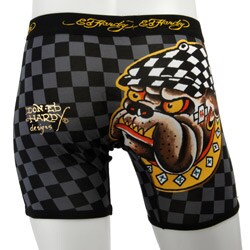

In addition, designer street style enabled the few social climbers that did exist (in entertainment industry, for example), to show that they valued their roots. These designs could succeed in high fashion because some top percentile earners wanted to present as being less wealthy: to communicate "street cred" or equality ideals. In haute couture, designers were becoming increasingly inspired by pop culture and street style. To create an image of belonging to a higher income consumer group, people sought real or copied branded items of "high fashion" items.

Socio-economics and the logo purse Īt the same time that fast fashion became able to supply vast quantities of imitation luxury goods, Western income inequalities had risen steadily. The appeal of fast fashion lies in the copying of higher end brands however, after something is no longer trendy it is on to the next, leaving clothes to go to waste, and workers to continue to live on unlivable wages. Retailers like Forever 21 and H&M have come under fire, not only for their wasteful fast fashion practices that have grown steadily since the beginning of 2000, but for the involvement of cheap labor. Americans throw out 14 million tons of clothing a year, with the help of fast fashion. Producing fashion at such fast rates involves less than secure worker conditions, and non-livable wages for the laborers. The ethics of fast fashion has been the topic of numerous debates and questioning of business practices. As well as the retail stores Hollister, Abercrombie & Fitch and possibly on a much smaller scale Limited Too, but in the end, stores like Forever 21 were better able to stay on top of the retail game. Stores such as Wet Seal and American Apparel are said to be "American precursors to the fast fashion empire". In 2004, the retail giant H&M, a master in rolling out fast fashion, collaborated with fashion designer Karl Lagerfeld to introduce a one-time collection which proved to be a huge success, as women flocked to H&M stores to own a piece of the designer's 30 selections available in the collection. Designers noticed their designs were being knocked-off, and decided to do something about it. This trend in fast fashion allowed shoppers to own designer items at lower prices, also allowing the acceptance and production of copycat styles. Notably, the retailer Target found major success in collaborating with various fashion designers for affordable designer pieces available for the average consumer. Retail giants of the new millennium included H&M, Forever 21, and Zara. By the early 2000s the rise of online retail and in-store fast fashion caused department store sales to dwindle in the wake of new styles being offered quicker than ever before by retailers. In the years that followed, that number began to fall. Penney, Kohl's and more had sales totaling $230 billion. ĭuring the year 1999, department stores such as Macy's, J.C. As affordable clothing became even more important in the entrance to the new age, brands had to find a way to keep up with their consumer's new spending habits. With its low cost appeal driven by trends straight off the runway, fast fashion was a significant factor in the fashion industry's growth. The early to mid-2000s saw a rise in the consumption of fast fashion: affordable off-the-peg high street clothing based on the latest high fashion designs. The later years of the decade saw a large-scale revival of clothing designs primarily from the 1960s, 1970s, and 1980s. In the early 2000s, many mid and late 1990s fashions remained fashionable around the globe, while simultaneously introducing newer trends. Furthermore, eco-friendly and ethical clothing, such as recycled fashions and fake fur, were prominent in the decade. Globalization also influenced the decade's clothing trends, with the incorporation of Middle Eastern and Asian dress into mainstream European, American and Australasian fashion. Those usually age 25 and older adopted a dressy casual style which was popular throughout the decade. Hip-hop fashion generally was the most popular among young people of all sexes, followed by the retro inspired indie look later in the decade.

boho), as well as the fashions of numerous music-based subcultures. Young British women in Portugal with straightened hair and thick makeup, in 2007Ģ000s fashion is often described as being a global mash up, where trends saw the fusion of vintage styles, global and ethnic clothing (e.g.


 0 kommentar(er)
0 kommentar(er)
